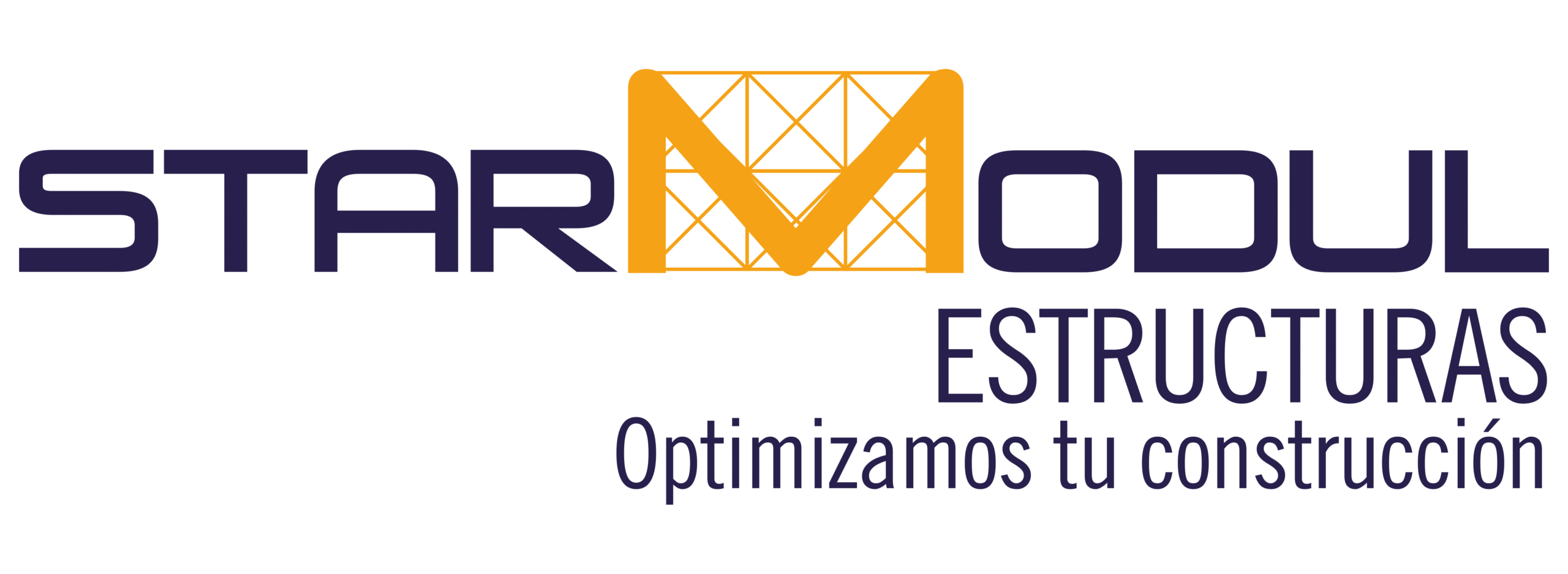Definition and general characteristics
Bolted metal structures represent an innovative and efficient approach to construction. They use an assembly system that makes it possible to create durable and versatile structures.
Bolted metal structures consist of a set of elements that are joined together by means of bolts, avoiding the use of welding. This technique simplifies the assembly process and provides a number of unique features. Among the main ones are:
- Strength: Bolted joints offer high resistance to mechanical stress and adverse weather conditions.
- Flexibility: They are easily adjustable and allow for future modifications without significant complications.
- Speed of assembly: Thanks to prefabrication, the time required to assemble the structure is considerably reduced.
- Sustainability: Minimizes material waste through optimized design.
Differences with welded structures
The main difference between bolted and welded structures lies in the method of joining their components. Welded structures require specific procedures and are usually more difficult to disassemble or modify. Some distinguishing characteristics are:
- Assembly process: Bolted structures allow for faster and easier assembly, with less need for skilled labor.
- Modifications: Welded structures are more complex to modify, while bolted structures can be disassembled and reconfigured without great difficulty.
- Quality control: Bolted joints allow for more rigorous quality control, which translates into better structural performance.
Types of screws and their specific use
The fasteners used in bolted metal structures are crucial to ensure the safety and durability of the construction. There are different types of bolts, each designed for a specific use:
- High-strength screws: They are used in joints that support significant loads, guaranteeing a robust fastening.
- Light structural screws: Suitable for applications where less force is required and easier to install.
- Self-drilling screws: The design of these screws allows the material to be drilled through at the same time as they are fastened, further facilitating the assembly process.
Most common materials: steel and aluminum
The materials used in the manufacture of bolted metal structures are essential to their performance and durability. The most common are steel and aluminum. Each has specific characteristics that make them ideal for different applications:
- Steel: This material is known for its high structural strength and durability, which makes it a popular choice for buildings that need to support heavy loads.
- Aluminum: A lightweight material that offers corrosion resistance. It is ideal for applications where weight reduction is sought without compromising structural integrity.
The choice of material depends on the type of project, the environmental conditions and the loads that the structure will have to support. In many cases, both materials are combined to take advantage of the benefits of each.
Main components of bolted steel structures
The main components of bolted steel structures are essential to ensure the strength and functionality of the constructions. These elements are varied and fulfill different functions in the assembly and stability of the structure.
Steel and aluminum profiles
Metal profiles form the skeleton of bolted structures. Steel and aluminum are the most commonly used materials due to their mechanical properties and versatility. Steel, due to its high tensile and compressive strength, is ideal for structures supporting heavy loads. On the other hand, aluminum, which is lighter, is preferred in applications where weight is a critical factor, such as temporary structures or architecturally demanding buildings.
Profiles can be found in different forms, such as beams, columns and mezzanines, and each type is adapted to specific needs according to the design of the project. The choice between steel and aluminum will depend on factors such as the load to be supported, the expected durability and the environmental conditions where the structure will be located.
Specialized joints and connectors
The joints in bolted metal structures play a crucial role, as they determine the transfer of forces and the overall stability of the system. Specialized connectors are essential to ensure that the elements are properly integrated.
Fins and anchors
Fins are parts used to reinforce joints between components. They are fastened with bolts, providing a solid connection that improves resistance to torsional and bending effects. Anchors, on the other hand, are used to fix the structure to the ground or to other bases, ensuring additional stability. Their design may vary depending on the type of soil and expected loads.
Unions for light and heavy loads
The joints must be designed to withstand different types of loads. There are specific joints that are used in structures that support light loads, such as temporary installations or smaller structures. For heavy loads, it is necessary to use reinforced joints, which ensure adequate transfer of forces and minimize the risk of structural failure.
Joint tolerances and fits
Joint tolerances are essential to ensure good assembly and proper fit of components. Variations in profile dimensions and assembly conditions require precise adjustments to achieve perfect integration. This is crucial to avoid deformations and to guarantee the correct stability of the structure under different loading conditions.
Treatments and finishes
The treatments and finishes applied to metal components are essential to improve their durability and resistance to external agents, such as corrosion. These processes ensure that structures maintain their integrity over time and in various climatic conditions.
Galvanized
Galvanizing is a treatment that consists of coating steel with a layer of zinc. This process protects the metal against corrosion, prolonging its service life. Structures that are exposed to humid or corrosive environments benefit greatly from this treatment, as it creates an effective barrier against oxidation.
Anticorrosive paints
Anticorrosion paints are another way to protect metal structures. These paints not only provide a layer of defense against corrosion, but can also provide aesthetic finishes. There are different types of specific paints for metal, which are chosen according to the environment to which the structure will be exposed and the desired duration of the finish.


